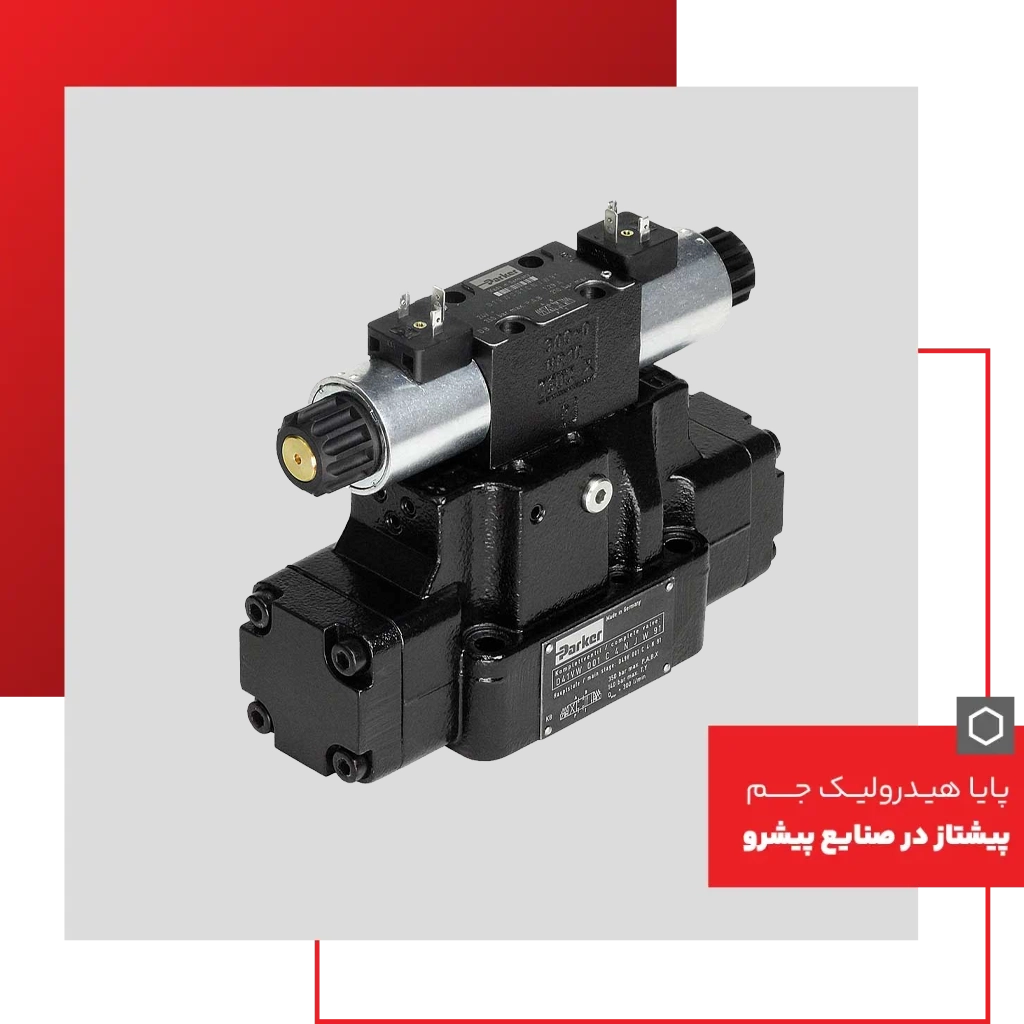What is the direction control valve?
In the world of pneumatics, the job of valves is to distribute air to cylinders, actuators, and nozzles. One of these types of hydraulic valves is directional control valves that work electrically and manually. Manual valves are usually opened and closed by a foot pedal, latch actuator, handle, or button, but solenoid valves are operated by a coil. Directional control valves perform only three functions: stopping fluid flow, allowing fluid flow, and changing the direction of fluid flow. Of course, these three tasks may be done in combination. In the rest of this article, we will learn about the types of directional control valves from the Paya Hydraulic Jam website.
Types of hydraulic direction control valves
In this section, we are going to examine the types of directional control valves along with their structure and application.
Two-way control valve 2/2
Two-way directional control valve or shut-off valve is one of the types of directional control valves, and as its name suggests, it has an input and an output A. These valves are used for purposes where the air flow path must be cut off periodically. Two-way valves are usually electric and controlled through pulses. Normally, the fluid passageway is closed; But when it is turned on due to the pressure of the actuator, the passage of fluid from the inlet to the outlet will be opened. Of course, this direction of movement is only one-way and the valve acts like a suction device.
2/3 three-way control valve
The three-way directional control valve is another type of directional control valve that has one inlet, one outlet, and one tank and has 2 modes. This design is done in order to have more control over the operators at points other than the input and output. In this valve, not only does the fluid flow in its own way, but its return can also be controlled.
Four-way hydraulic direction control valve 2/4
Four-way directional control valves are another type of directional control valves that have 4 inputs and outputs. A directional valve is usually installed in these valves and they are often used to create reversible movements.
5 way direction control valve 2/5
The 5-way directional control valve is also one of the types of directional control valves that has five ports and two modes. These valves are used, for example, to control double-acting cylinders. A double-acting cylinder requires two valve outlet ports, which are provided by the flow control valve.
5 way direction control valve 3/5
Unlike the previous type, this valve has 3 modes instead of 2 modes, but it has the same 5 inputs and outputs. These valves are very widely used and are used to control the cylinder in the middle position. The 5-way direction control valve is suitable for situations where it is not possible to use the 3-way direction control valve. Although a 3-way valve works well for low-to-high-pressure flow, high-to-low-pressure flow becomes nearly impossible if no air is used for expansion.
Naming the pneumatic direction control valve
In the classification of types of pneumatic valves, such as two-way, three-way, etc., you saw numerical names with a slash among them. In fact, these names indicate the number of input and output ports and the number of valve switching modes. The number on the left side of the slash indicates the number of ports and the number on the right indicates the number of valve switching modes. So if a valve has 5 ports and 3 switching modes, 3/5 is written and read as 5 to 3.
Measuring criteria for pneumatic direction control valves
To measure the performance of all types of directional control valves, the following points are taken into account.
Pressure Range: The amount of pressure that the valve is set to control
Operational Media: The types of media that the valve can safely handle
Flow capacity: the capacity of the valve for air flow
Cycle rate: the maximum rate of rotation of the valve per unit of time
Response Time: The amount of time the valve needs to change state after activation
Port size: the size of the input and output ports















